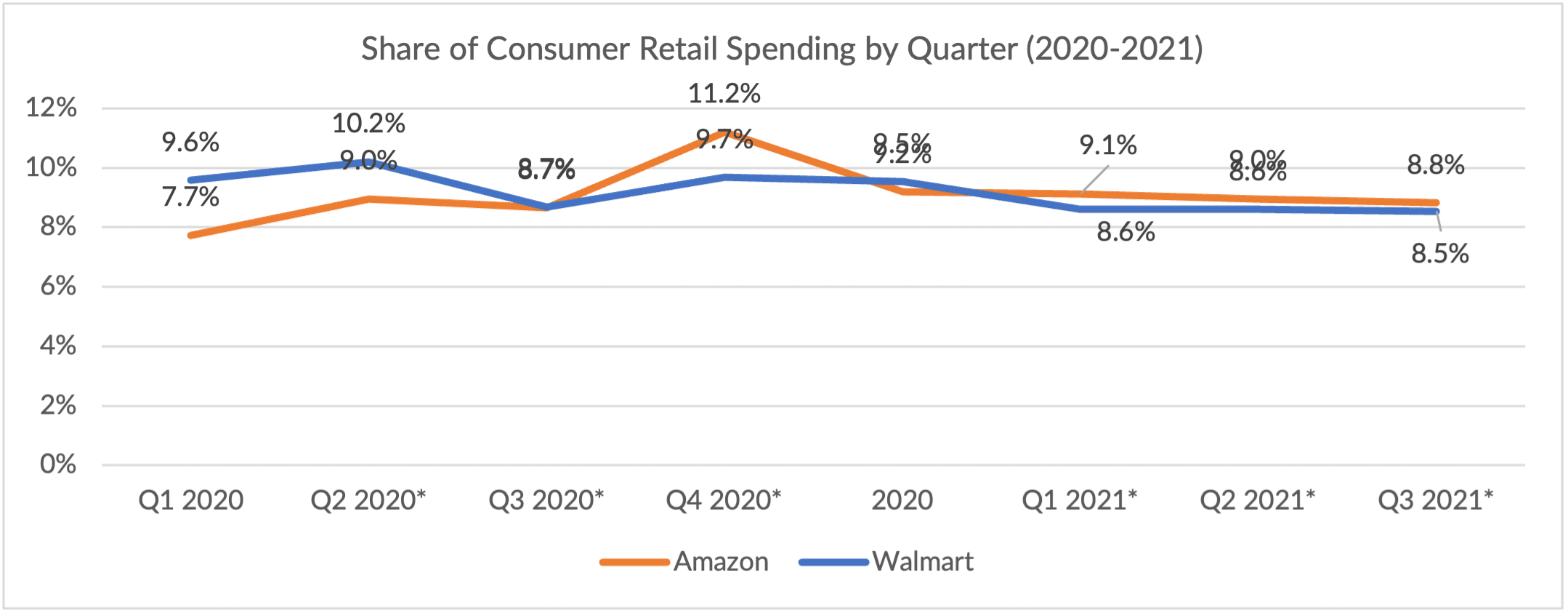
Though online Black Friday shopping was down slightly compared to last year, more shoppers still looked online for deals than in-store, with over two-thirds visiting Amazon, putting more pressure on rival Walmart in the coming weeks.
According to PYMNTS’ data, nearly 71% of Black Friday shoppers made their online purchases at Amazon, while over 41% made digital purchases through Walmart and 28% did so through Target.
PYMNTS researchers surveyed 2,060 U.S. consumers on Friday (Nov. 26) and Saturday (Nov. 27) about how they spent their Black Fridays, finding that 13% more holiday shoppers made purchases online than in stores this year, and more consumers shopped this Black Friday than any year since 2018. Nearly two-thirds of U.S. consumers who plan to shop this holiday season made at least one purchase on Black Friday, up from 60% who did so in 2019 and 2020 and 62% who did so in 2018.
Read more: Inventory Stockouts Cost Retailers up to $4.6B on Black Friday
Among the most common items that Black Friday shoppers picked up were clothing, toys and musical instruments, shoes and consumer electronics, with more products in each category purchased online rather than in-store. Furthermore, all of these retail categories are areas where Amazon has an advantage over Walmart. In electronics, for example, Amazon had 23% of consumers’ spending in the third quarter compared to Walmart’s 5% share; in clothing and apparel, the Seattle-based company had over a 13% share, while the box-store giant had 6%.
At the end of the third quarter, according to PYMNTS’ proprietary data, Amazon had an 8.8% share of consumers’ retail spending, compared to Walmart’s 8.5% share. This is the third quarter in a row that Amazon has had a slightly higher share of retail spending than the Arkansas-based box store chain, suggesting that this may be the year the eCommerce giant officially overtakes Walmart as the No. 1 U.S. retailer on an annual basis.
 See also: AMZN vs WMT Weekly: Amazon Finally Matches Walmart for Consumer Retail Sales
See also: AMZN vs WMT Weekly: Amazon Finally Matches Walmart for Consumer Retail Sales
In-Store Advantage
Walmart was still the leader in brick-and-mortar sales on Black Friday, with nearly 59% of consumers who shopped in-store stepping into one of the box store locations. Over 42% visited physical Target locations, while approximately 30% went to Best Buy and 21% went to Kohl’s.
It’s important to remember that Black Friday isn’t the last opportunity for retailers to entice shoppers this holiday season — December hasn’t even begun, and 40% of consumers plan to make the majority of their holiday spending between Black Friday and Christmas. There’s also the slim 7% of consumers who say most of their holiday spending will occur after Christmas.
This means that if brick-and-mortar retailers are able to assuage concerns about crowds, item availability and new COVID-19 variants, they have plenty of opportunity in the coming weeks to bring shoppers through the doors. And though consumers say they plan to spend 47% of their holiday expenditure online this year, most merchants have implemented curbside pickup and buy online, pick up in-store (BOPIS) capabilities since the pandemic began, which could help boost sales.
And for Walmart specifically, its grocery advantage could be a boon. Walmart has over 19% of overall food and beverage sales, and as consumers stock up for holiday parties and Christmas dinners, the Arkansas company has a chance to show off the toys, clothes and TVs that could end up under the tree this year.
Related news: Holiday Shopping Outlook Suggests ‘Amazon Christmas’ May Be Underway